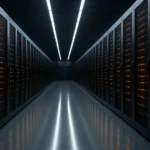Recently we interviewed its slightly older brother, the Dell PowerEdge R630. In this past interview, we discussed why the Dell R630 is considered a legend of the data center. The Dell R640, however, disagrees about the popularity and hype of his older, less capable brother. Like any product rising to popularity, the Dell R640 is eager to prove itself and overcome the shadow of its predecessors.
In our last interview, we labeled the R630 Ynvolve’s bestseller. Why would you say you are a better fit for Ynvolve’s clients?
Yes, it’s true; the Dell PowerEdge R630 was all everyone could talk about a few years back. It’s a versatile machine that Ynvolve’s reps can configure at a good price and deliver a decent power ratio. I wouldn’t say I am a better fit for all of Ynvolve’s clients because it all depends on their needs. But I’ll leave that to Florent, Andrew, Gintare, Thomas, and Harry to determine.
But let’s be honest, R630 is getting old. I can maximize application performance and provide the flexibility that the R630 only wishes it could accomplish.
That’s a pretty bold statement. Does it mean you are suitable for all businesses, even better than the R630?
As mentioned, I wouldn’t say I am necessarily compatible with ALL businesses. After all, not every business needs or necessarily wants what I have to offer. But that’s true for all servers out there.
However, my DIMM Speed is up to 2933 MT/s, and I can hold up to 3TB of RDIMM /LRDIMM RAM. Not to brag, but it’s twice the maximum RAM capacity of an R630. And I am not even talking about Persistent Memory here.
Also, I am actually part of the first generation of Dell PowerEdge servers that can be equipped with Dell’s BOSS cards (Boot Optimized Storage Solution). Basically, it’s a simple PCIe card with two M.2 SSDs and an integrated RAID controller on top of it. This is relevant because the latest versions of VMware ESXi are no longer supported or recommended to run on SD cards (commonly used in R630s and previous generation systems). If you want to run VMware in a fully supported setup, my BOSS card option is a valuable option.
I can also support 25GbE connectivity on my Network Daughter Card, whereas the R630 is limited to up to 10GbE speeds.
And don’t even get me started on my CPU power.
Actually, let’s talk about that. Why is your CPU power better?
Well, I host Intel’s new line of scalable processors, which is pretty impressive, even if I say so myself. I can hold up to 28 cores per processor. Ask R630 if it can do that… Yeah, I didn’t think so. I’m a good option if you want an optimal price-to-performance ratio.
The R630 has been on the refurbished market for a while, making it readily available to users. Can you say the same for yourself?
Absolutely! If you reach out to me via the OEM, I am still available, but with the release of the R650, I have found a new and loyal fan base in the refurbished market.
Aren’t you afraid that the Dell R650 will become more famous than you? We are hearing lots of buzz around it.
The R650 is a great option, and it definitely has newer technology than I have. But with new technology, you also will have a price increase. When it comes to a price-to-performance ratio within the PowerEdge family, I can confidently say… I am your guy 😉
Although, at Ynvolve we talk to our servers as if they could understand us, this is not the case. We actually interviewed one of our sales reps to get all the answers.
If you have any questions about the feasibility of adding a Dell PowerEdge R640 to your IT infrastructure lineup, give us a call. Our reps are ready and in shape to answer all your questions and take in your requests.





